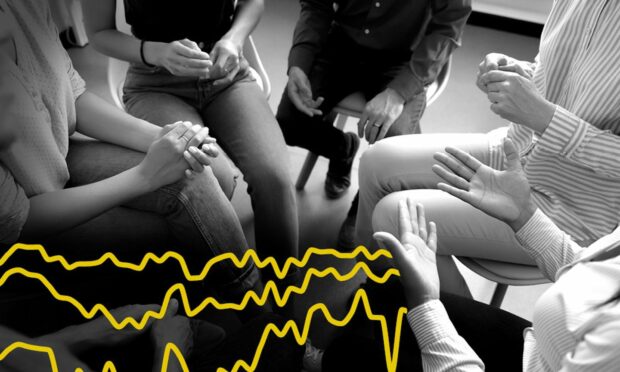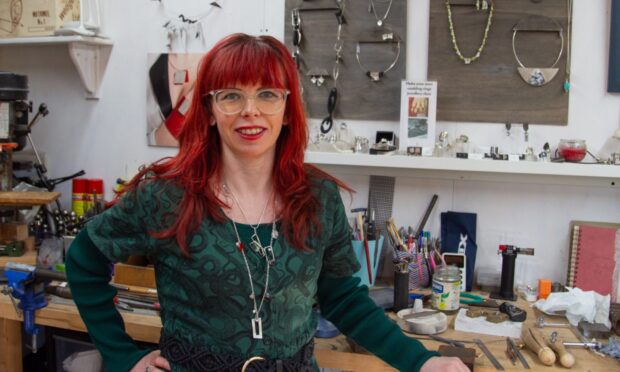If someone you know is suffering a mental health crisis – the earlier they get help the better their chances of long-term recovery.
With that in mind we have examined the available data on waiting times for psychological therapies and childhood and adolescent mental health services (CAMHS) in Scotland.
Our charts show if the Scottish Government is meeting its waiting time targets and if services are bouncing back after the difficulties and pressures caused by the Covid pandemic.
The data comes from the NHS Scotland open data page and we will update it when fresh data is available.
What is the target?
For both adult psychological therapies and CAMHS the target is the same.
The aim is for a medical practitioner to see 90% of people within 18 weeks of their referral.
The Scottish Government introduced this target in December 2014.
Adult psychological therapies waiting times in Scotland
Psychological therapies might be more commonly known as “talking therapies”.
This can include types of therapy such as cognitive behavioural therapy, psychotherapy, family therapy, and interpersonal therapy.
These therapies can be used to treat mental health conditions such as depression, anxiety and post traumatic stress syndrome.
A 2020 report on psychological therapies from Scottish mental health charity, SAMH said people who participated in their focus groups quoted long waiting times as a barrier to them feeling involved in the decisions around their treatment.
[The Doctor] refused to put me on the waiting list for counselling as they said with the waiting list in my area there was no point.”
Excerpt from a report by SAMH
One patient told SAMH “[The Doctor] refused to put me on the waiting list for counselling as they said with the waiting list in my area there was no point.”
Public Health Scotland defines psychological therapies as “a range of interventions, based on psychological concepts and theory, which are designed to help people understand and make changes to their thinking, behaviour and relationships in order to relieve distress and to improve functioning.”
The chart below shows waiting times for psychological therapies, broken down by health board.
In contrast, the chart below refers to patients who have been seen by the psychological therapies department and therefore the clock on their waiting time has stopped.
CAMHS waiting times in Scotland
Public Health Scotland say the aim of childhood and adolescent mental health services is “to develop and deliver services for those children and young people (and their parents/carers) who are experiencing the most serious mental health problems”.
They also have an important role in supporting the mental health capability of the wider network of children’s services.
CAMHS are usually delivered by multidisciplinary teams including nurses, psychiatrists, psychologists, social workers, and other specialists.
The Scottish Government states that CAMHS services should be available to people in Scotland aged under 19, who have “clear symptoms of mental ill health which place them or others at risk and/or are having a significant and persistent impact on day-to-day functioning”.
They also state that, while it might be appropriate in some cases for a child to be immediately referred to CAMHS, it is more likely a referral will be given when intervention within a primary care, education or community setting has been exhausted.
For parents this is likely a long and stressful process.
Children’s mental health deteriorating due to long CAMHS waiting times

According to SAMH, 76% of parents involved in a study stated that their child’s mental health had deteriorated while they were waiting to be seen by specialist mental health services.
Scottish Labour leader Anas Sarwar criticised Nicola Sturgeon over the Scottish Government’s handling of CAMHS waiting times in Scotland, saying that 44% of children on the waiting list were over the 18-week target.
They also highlight issues in the referral process with around a fifth of all referrals of children and young people rejected by CAMHS.
The chart below shows waiting times for CAMHS, broken down by health board.
This chart shows a breakdown of the patients currently on the waiting list to be seen.
And, as with the psychological therapies chart above, this chart shows completed CAMHS waits.
These patients have all now been seen by the CAMHS team and therefore the clock on their waiting time has stopped.
Where can I get help?
Speak to your GP if you feel like you would benefit from psychological therapies.
In the case of children some schools can also make a referral.
You can find further information on the type of services available on the NHS inform website.
If you have been impacted by long waiting times and wish to share your story, please fill in the form below.
More health data
This article is part of a series that aims to make data about waiting times and pressures on the NHS more accessible and easy to understand.
You can view the rest of the series below:
The charts in this tracker series are automatically updated with the latest available data from Public Health Scotland. The source code for this project can be found on our data team GitHub page.



















Conversation